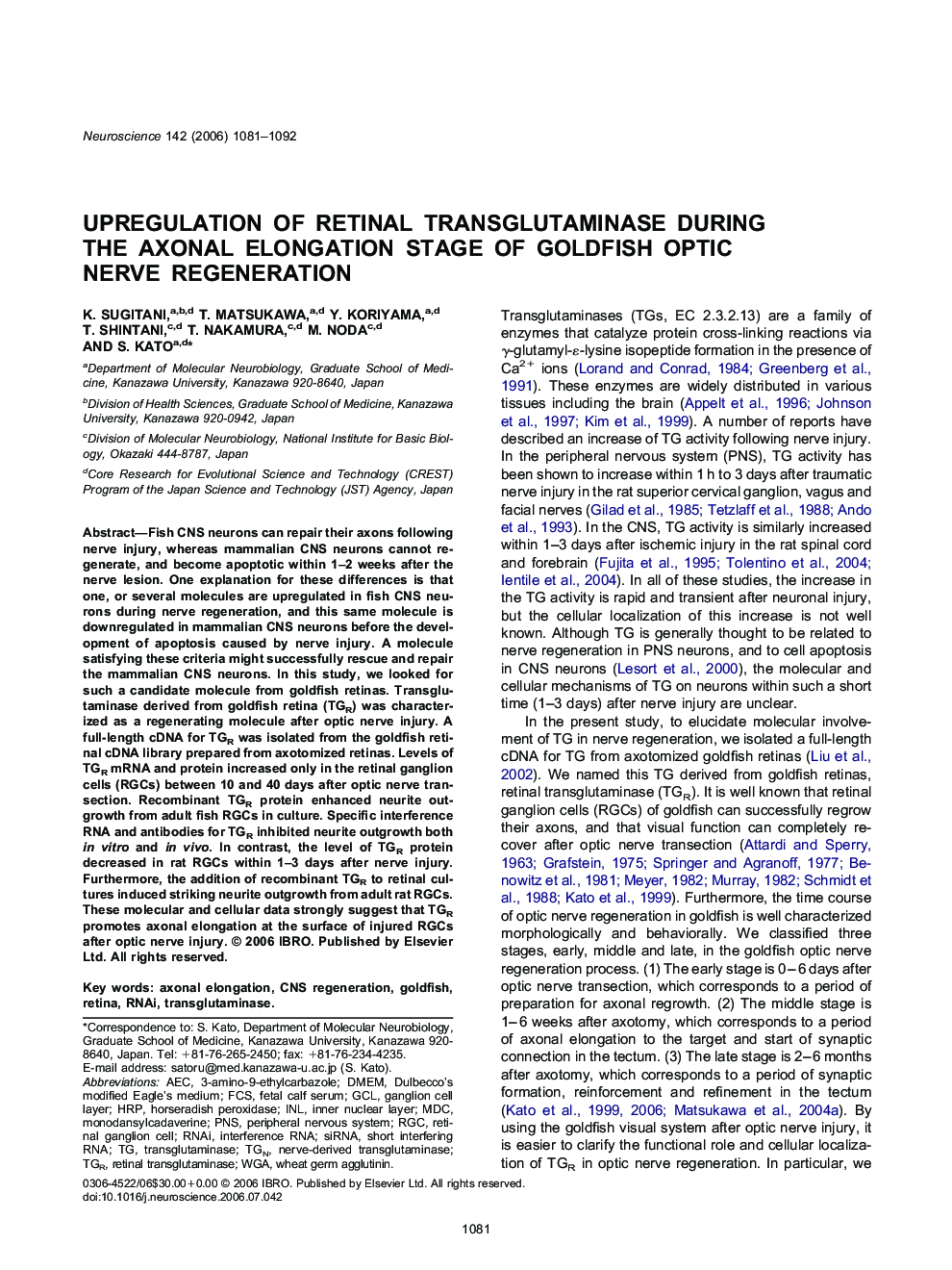| Article ID | Journal | Published Year | Pages | File Type |
|---|---|---|---|---|
| 4341568 | Neuroscience | 2006 | 12 Pages |
Fish CNS neurons can repair their axons following nerve injury, whereas mammalian CNS neurons cannot regenerate, and become apoptotic within 1–2 weeks after the nerve lesion. One explanation for these differences is that one, or several molecules are upregulated in fish CNS neurons during nerve regeneration, and this same molecule is downregulated in mammalian CNS neurons before the development of apoptosis caused by nerve injury. A molecule satisfying these criteria might successfully rescue and repair the mammalian CNS neurons. In this study, we looked for such a candidate molecule from goldfish retinas. Transglutaminase derived from goldfish retina (TGR) was characterized as a regenerating molecule after optic nerve injury. A full-length cDNA for TGR was isolated from the goldfish retinal cDNA library prepared from axotomized retinas. Levels of TGR mRNA and protein increased only in the retinal ganglion cells (RGCs) between 10 and 40 days after optic nerve transection. Recombinant TGR protein enhanced neurite outgrowth from adult fish RGCs in culture. Specific interference RNA and antibodies for TGR inhibited neurite outgrowth both in vitro and in vivo. In contrast, the level of TGR protein decreased in rat RGCs within 1–3 days after nerve injury. Furthermore, the addition of recombinant TGR to retinal cultures induced striking neurite outgrowth from adult rat RGCs. These molecular and cellular data strongly suggest that TGR promotes axonal elongation at the surface of injured RGCs after optic nerve injury.
